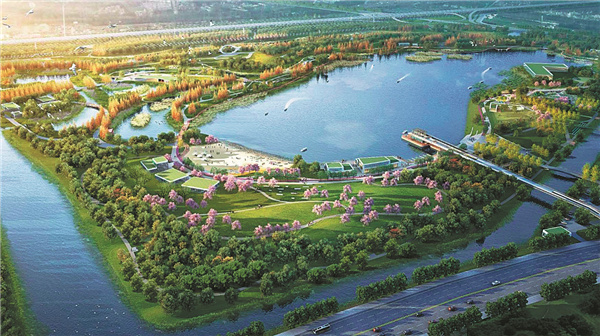

One of the first things about Shanghai that Lee Parks says he liked when he first settled down in the city's Pudong New Area in 2004 was "green planning".
Despite being a new district which started rapid development only since the 1990s, city authorities had not forgotten about the importance of nature in planning the new area.
Parks says he noticed countless trees were being planted in communities, parks and streets.
"Twenty years on, those trees and parks are maturing, and I now see a city with increasingly valuable ecological resources," says Parks, the head of landscape at the Shanghai Office of the American infrastructure consulting firm AECOM.
"We now have shaded sidewalks because tree canopies have matured. The ecological habitat and wildlife species are increasing in diversity every year. I really have seen changes and benefits happen in Shanghai."
But Parks wasn't just a witness to this improvement of the city's ecology-he was a part of it. In the past five years, the Briton has been involved in the planning of more than a dozen large-scale parks and green spaces that have contributed to the diversity of the city's landscapes.
One of the most important projects for Parks and a team of ecologists and water specialists at AECOM was the second phase of the Binjiang Forest Park, which is located at the city's northern edge of Wusongkou, where the Huangpu River meets the Yangtze River.
The opening of the site's first phase was in 2007. Parks and his team proposed creating more space for activities in the 114-hectare Phase II area in a designing competition in 2015.
"We learned that people like to go to parks to have barbecues. But such activities are in conflict with the very nature of an ecological conservation area, a place where you want wildlife to thrive, not to be disturbed," he says.
The design team also proposed rerouting the main road to better protect a 100-year-old tree at the site, and elevating the road so that an underground passage connecting two parts of the park for wildlife, one of the most notable being the Chinese Water Deer, could be created.
"At AECOM, we see the future landscape of Shanghai as inclusive, high-quality, well-governed, ecological and interconnected, and this allows for the creation of a truly global city that supports its citizens and wildlife," says Parks.
Today, Shanghai has 406 parks, a forest coverage of 18.49 percent and the area of public green spaces per capita is 8.5 square meters, according to the municipal landscaping and city appearance bureau. But the city is still eyeing improvement.
In July, the municipal government announced the Thousand Parks Plan with the aim of increasing the number in the city to more than 1,000 by 2025, and 2,000 by 2035.